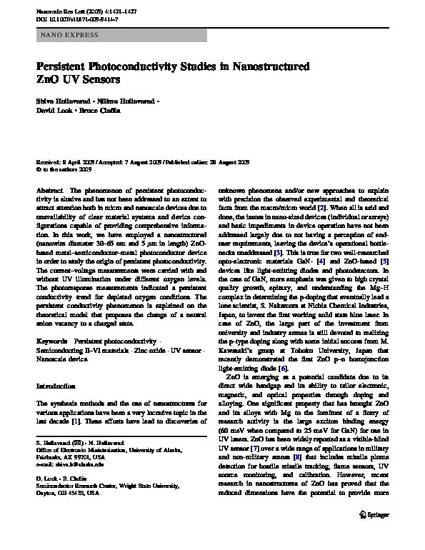
The phenomenon of persistent photoconductivity is elusive and has not been addressed to an extent to attract attention both in micro and nanoscale devices due to unavailability of clear material systems and device configurations capable of providing comprehensive information. In this work, we have employed a nanostructured (nanowire diameter 30–65 nm and 5 μm in length) ZnO-based metal–semiconductor–metal photoconductor device in order to study the origin of persistent photoconductivity. The current–voltage measurements were carried with and without UV illumination under different oxygen levels. The photoresponse measurements indicated a persistent conductivity trend for depleted oxygen conditions. The persistent conductivity phenomenon is explained on the theoretical model that proposes the change of a neutral anion vacancy to a charged state.
Available at: http://works.bepress.com/david_look/57/
